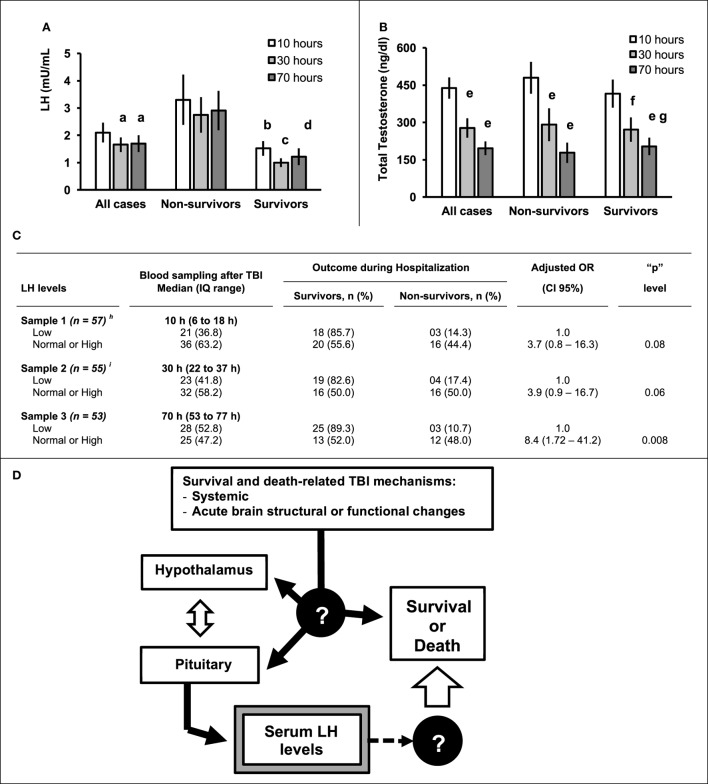Figure 1.
Serum level (mean ± SE) of luteinizing hormone (LH) (A) or total testosterone (B) determined in the Sample 1 (n = 57, median of 10 h after traumatic brain injury (TBI), IQ range = 6–18 h), Sample 2 (n = 55, median of 30 h after TBI, IQ range = 22–37), and Sample 3 (n = 53, median of 70 h after TBI, IQ range 53–77) according to hospital mortality. (C) Table showing the hospital mortality according to the LH levels adjusted for admission Glasgow coma scale and pupils’ examination. The normal or high LH levels in sample 1 (p = 0.08) and 2 (p = 0.06) showed a trend for independent association with mortality and a significant (p = 0.008) independent association in the Sample 3. (D) The survival and death-related TBI mechanisms may affects hypothalamus and hypophysis resulting in the LH levels changes (black arrows). It is unknown if the LH level itself affects the prognosis (dashed arrows) or is only an epiphenomenon without a cause-effect relationship with the patients’ prognosis. aSignificant difference (p = 0.04) between Sample 2 and Sample 1 and Sample 3 and Sample 1 by Paired-Samples “T” test; bSignificant difference between survivors and non-survivors for “p” < 0.02 (Sample 1) by Student “t” test; cSignificant difference between survivors and non-survivors for “p” = 0 0.002 (Sample 2) by Student “t” test; dSignificant difference between survivors and non-survivors for “p” = 0.01 (Sample 3) by Student “t” test; eSignificant difference from the Sample 1 for “p” < 0.0001 by Paired-Samples “T” test; fSignificant difference from the Sample 1 for “p” = 0.02 by Paired-Samples “T” test; gSignificant difference from the Sample 1 for “p” = 0.002 by Paired-Samples “T” test. h,IResults previously published by Hohl et al. (10) and included as a part of his PhD Thesis in Medical Sciences (11).

